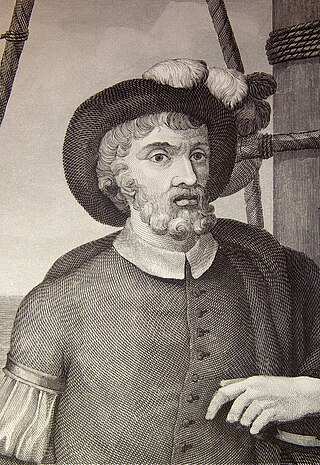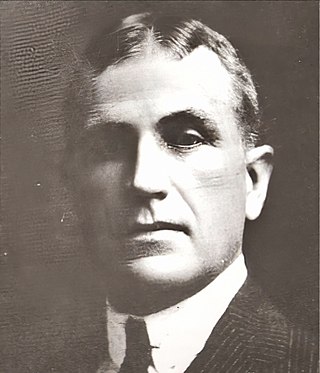Related Research Articles

1755 (MDCCLV) was a common year starting on Wednesday of the Gregorian calendar and a common year starting on Sunday of the Julian calendar, the 1755th year of the Common Era (CE) and Anno Domini (AD) designations, the 755th year of the 2nd millennium, the 55th year of the 18th century, and the 6th year of the 1750s decade. As of the start of 1755, the Gregorian calendar was 11 days ahead of the Julian calendar, which remained in localized use until 1923.

1637 (MDCXXXVII) was a common year starting on Thursday of the Gregorian calendar and a common year starting on Sunday of the Julian calendar, the 1637th year of the Common Era (CE) and Anno Domini (AD) designations, the 637th year of the 2nd millennium, the 37th year of the 17th century, and the 8th year of the 1630s decade. As of the start of 1637, the Gregorian calendar was 10 days ahead of the Julian calendar, which remained in localized use until 1923.

Juan Ponce de León was a Spanish explorer and conquistador known for leading the first official European expedition to Florida and for serving as the first governor of Puerto Rico. He was born in Santervás de Campos, Valladolid, Spain in 1474. Though little is known about his family, he was of noble birth and served in the Spanish military from a young age. He first came to the Americas as a "gentleman volunteer" with Christopher Columbus's second expedition in 1493.

Juan Sebastián Elcano was a Spanish navigator, ship-owner and explorer of Basque origin from Getaria, part of the Crown of Castile when he was born, best known for having completed the first circumnavigation of the Earth in the ship Victoria on the Magellan expedition to the Spice Islands. He received recognition for his achievement by Charles I of Spain with a coat of arms bearing a globe and the Latin motto Primus circumdedisti me.

Antonio de Ulloa y de la Torre-Giralt, FRS, FRSA, KOS was a Spanish naval officer, scientist, and administrator. At the age of nineteen, he joined the French Geodesic Mission to what is now the country of Ecuador. That mission took more than eight years to complete its work, during which time Ulloa made many astronomical, natural, and social observations in South America. The reports of Ulloa's findings earned him an international reputation as a leading savant. Those reports include the first published observations of the metal platinum, later identified as a new chemical element. Ulloa was elected as a Fellow of the Royal Society of London in 1746, and as a foreign member of the Royal Swedish Academy of Sciences in 1751.
Ruy López de Villalobos was a Spanish explorer who sailed the Pacific from Mexico to establish a permanent foothold for Spain in the East Indies, which was near the Line of Demarcation between Spain and Portugal according to the Treaty of Zaragoza in 1529. Villalobos gave the Philippines their name, after calling them Las Islas Filipinas in honor of Philip of Austria, the Prince of Asturias at the time, who later became Philip II of Spain.

The Congrès internationaux d'architecture moderne (CIAM), or International Congresses of Modern Architecture, was an organization founded in 1928 and disbanded in 1959, responsible for a series of events and congresses arranged across Europe by the most prominent architects of the time, with the objective of spreading the principles of the Modern Movement focusing in all the main domains of architecture.

The Age of Discovery, also known as the early modern period, was a period largely overlapping with the Age of Sail, approximately from the 15th century to the 17th century in European history, during which seafaring Europeans explored and colonized regions across the globe.

Antonio Pigafetta was an Venetian scholar and explorer. He joined the expedition to the Spice Islands led by explorer Ferdinand Magellan under the flag of the emperor Charles V and after Magellan's death in the Philippine Islands, the subsequent voyage around the world. During the expedition, he served as Magellan's assistant and kept an accurate journal, which later assisted him in translating the Cebuano language. It is the first recorded document concerning the language.

La Santa María, alternatively La Gallega, was the largest of the three Spanish ships used by Christopher Columbus in his first voyage across the Atlantic Ocean in 1492, the others being the Niña and the Pinta. Her master and owner was Juan de la Cosa, a man from Santoña, Cantabria, operating in south Spanish waters. Requisitioned by order of Queen Isabella and by contract with Christopher Columbus, whom de la Cosa knew previously, the Santa María became Columbus's flagship on the voyage as long as it was afloat. Having gone aground on Christmas Day, 1492, on the shores of Haiti, through inexperience of the helmsman, it was partially dismantled to obtain timbers for Fort Navidad, "Christmas Fort," placed in a native Taíno village. The fort was the first Spanish settlement in the New World, which Columbus had claimed for Spain. He thus regarded the wreck as providential. The hull remained where it was, the subject of much modern wreck-hunting without successful conclusion.

Hasekura Rokuemon Tsunenaga was a kirishitan Japanese samurai and retainer of Date Masamune, the daimyō of Sendai. He was of Japanese imperial descent with ancestral ties to Emperor Kanmu. Other names include Philip Francis Faxicura, Felipe Francisco Faxicura, and Philippus Franciscus Faxecura Rocuyemon in period European sources.

Federico Laredo Brú was an attorney and served as President of Cuba from 1936 to 1940. He was married to Leonor Gomez-Montes. Laredo Bru was a Colonel in Cuba’s Liberation Army during the Cuban War of Independence
The year 1500 AD in science and technology included many events, some of which are listed here.
Jacinto Caamaño Moraleja was the leader of the last great Spanish exploration of Alaska and the Coast of British Columbia. He was a Knight of the Military Order of Calatrava.
Samuel Pallache was a Jewish Moroccan-born merchant, diplomat, and pirate of the Pallache family, who, as envoy, concluded a treaty with the Dutch Republic in 1608. His antecedents fled to Morocco during the Reconquista. He was appointed as an agent under the Saadi Sultan Zidan Abu Maali. Pallache would travel to the newly-independent Dutch Republic to discuss diplomatic terms with the Dutch against their mutual enemy, the Spanish. Pallache died in the Netherlands, brought there due to the intervention of his ally, Maurice of Nassau, whom helped Pallache when he was arrested by the Spanish.

During the Age of Exploration, the Spanish Empire undertook several expeditions to the Pacific Northwest of North America. Spanish claims to the region date to the papal bull of 1493, and the Treaty of Tordesillas signed in 1494. In 1513, this claim was reinforced by Spanish explorer Vasco Núñez de Balboa, the first European to sight the Pacific Ocean, when he claimed all lands adjoining this ocean for the Spanish Crown. Spain only started to colonize the claimed territory north of present-day Mexico in the 18th century, when it settled the northern coast of Las Californias.

The Magellan expedition, also known as the Magellan–Elcano expedition, was the first voyage around the world in recorded history. It was a 16th century Spanish expedition initially led by Portuguese explorer Ferdinand Magellan to the Moluccas, which departed from Spain in 1519, and completed in 1522 by Spanish navigator Juan Sebastián Elcano, after crossing the Atlantic, Pacific and Indian oceans, culminating in the first circumnavigation of the world.
Los Negros was a criminal organization that was once the armed wing of the Sinaloa Cartel and after a switch of alliances, became the armed wing of the Sinaloa splinter gang, the Beltrán-Leyva Cartel. In 2010 it went independent and had been contesting the control of the Beltrán-Leyva Cartel. It was then the criminal paramilitary unit of Édgar Valdez Villarreal in Mexico. Valdez was arrested on August 30, 2010 near Mexico City. Los Negros was led by Valdez at the time they merged with the Sinaloa Cartel.
Pieter Schouten was a 17th-century Dutch corsair and privateer. He was one of the first Dutchmen to explore to the Caribbean and, while employed by the Dutch West Indies Company, was involved in extensive reconnaissance to establish Dutch bases in the West Indies.

Laredo Kid is a Mexican luchador enmascarado, or masked professional wrestler. He is currently signed to both Impact Wrestling and Lucha Libre AAA Worldwide, but is currently inactive due to abdominal surgery.
References
- ↑ Winfree, Arthur T. (2001). The Geometry of Biological Time (2nd ed.). New York: Springer. p. 10. ISBN 978-1-4757-3484-3.
- ↑ Fidèle de Ros (1948). "Chapter 2 : Le Médecin". Un inspirateur de Sainte-Thérèse. Le Frère Bernardin de Laredo (in French). Paris: Librairie philosophique J. Vrin.